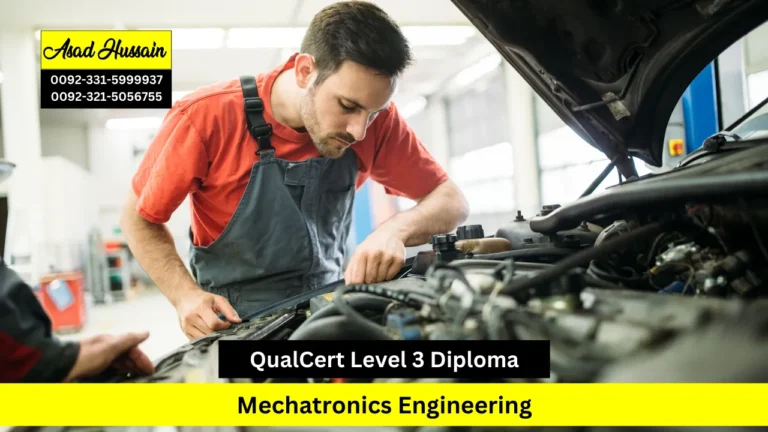In the modern industrial landscape, ensuring the safety of machinery is paramount. This necessity is addressed through various international standards, with ISO 13855:2010 being one of the critical guidelines. This blog post delves into what ISO 13855:2010 entails, its significance, and how it enhances machinery safety.
ISO 13855:2010, titled “Safety of machinery — Positioning of safeguards with respect to the approach speeds of parts of the human body,” is an international standard developed by the International Organization for Standardization (ISO). This standard provides guidelines for the positioning of protective devices to ensure that machinery is operated safely, minimizing the risk of injury to workers.
ISO 13855:2010 is a vital standard that plays a crucial role in enhancing the safety of machinery. By providing guidelines on the positioning of safeguards, it helps protect workers from potential hazards and ensures a safer working environment. Implementing this standard not only promotes compliance with international regulations but also fosters a culture of safety and continuous improvement. Embracing ISO 13855:2010 is a step towards creating a safer and more efficient industrial landscape.
Program Highlights
Mandatory Units
- Introduction to Machinery Safety Standards
- Approach Speeds of Human Body Parts
- Principles of Safeguard Positioning
- Risk Assessment and Mitigation
- Compliance and Verification
- Integration with Machinery Design
- Practical Applications and Case Studies
- Maintenance and Continuous Improvement
- Training and Education
- Educational Background:
- Applicants must have a high school diploma or equivalent qualification.
- A background in engineering, technology, or a related field is preferred but not mandatory.
- English Language Proficiency:
- Proficiency in English is essential for successful completion of the course.
- Prerequisite Knowledge:
- Basic understanding of machinery safety principles and terminology is recommended.
- Familiarity with engineering concepts such as risk assessment and machinery design is beneficial.
- Technical Skills:
- Applicants should possess basic computer skills, including proficiency in Microsoft Office applications.
- Familiarity with CAD software and machinery design tools may be advantageous but is not required.
- Health and Safety Considerations:
- Due to the practical nature of the course, applicants should be physically capable of participating in hands-on activities safely.
- Applicants with any health conditions that may affect their ability to participate in practical exercises should provide relevant medical clearance.
- Work Experience:
- While not mandatory, relevant work experience in engineering, manufacturing, or occupational safety may be beneficial.
- Work experience provides practical insights and enhances understanding of course concepts.
- Age Requirements:
- Applicants must meet the minimum age requirement set by the institution offering the course.
- Typically, applicants should be at least 18 years old, although age requirements may vary by institution.
Introduction to Machinery Safety Standards
- Understand the historical development and purpose of machinery safety standards.
- Identify key international safety standards related to machinery, including ISO 13855:2010.
- Explain the importance of safety standards in preventing workplace accidents and injuries.
- Describe the fundamental principles and scope of ISO 13855:2010.
Approach Speeds of Human Body Parts
- Define approach speeds and their relevance in machinery safety.
- Calculate the approach speeds of various parts of the human body.
- Analyze the factors influencing approach speeds, such as age, physical condition, and type of movement.
- Apply knowledge of approach speeds to determine safe distances for protective measures.
Principles of Safeguard Positioning
- Understand the types and functions of different safeguards (physical barriers, light curtains, pressure-sensitive mats).
- Determine the minimum safe distances for placing safeguards according to ISO 13855:2010.
- Explain the criteria for selecting appropriate safeguards based on machinery type and operational environment.
- Implement the principles of safeguard positioning to enhance machinery safety.
Risk Assessment and Mitigation
- Conduct a comprehensive risk assessment for machinery in various industrial settings.
- Identify potential hazards associated with machinery operation.
- Evaluate the severity and likelihood of injuries resulting from identified hazards.
- Develop and implement effective risk mitigation strategies to minimize risks.
Compliance and Verification
- Understand the regulatory requirements for machinery safety compliance.
- Explain the process of verifying compliance with ISO 13855:2010 and other relevant standards.
- Conduct audits and inspections to ensure adherence to safety standards.
- Prepare documentation and reports for regulatory bodies and internal reviews.
Integration with Machinery Design
- Integrate safety principles and safeguards into the initial design phase of machinery.
- Collaborate with design and engineering teams to incorporate safety features effectively.
- Evaluate the impact of safety standards on machinery design and functionality.
- Implement design modifications to enhance safety while maintaining operational efficiency.
Practical Applications and Case Studies
- Analyze real-world case studies to understand the application of ISO 13855:2010.
- Identify common challenges and solutions in implementing machinery safety standards.
- Apply theoretical knowledge to practical scenarios to enhance problem-solving skills.
- Share best practices and lessons learned from case studies to improve safety protocols.
Maintenance and Continuous Improvement
- Develop maintenance schedules and procedures for safety devices and safeguards.
- Understand the importance of regular maintenance in ensuring machinery safety.
- Implement continuous improvement processes to enhance safety measures over time.
- Monitor and evaluate the effectiveness of existing safety protocols and make necessary adjustments.
Training and Education
- Design and deliver effective training programs on machinery safety standards and practices.
- Understand the role of education in fostering a safety culture within the organization.
- Evaluate the effectiveness of training programs and identify areas for improvement.
- Promote ongoing learning and development
This course on ISO 13855:2010 Safety of Machinery is designed for a diverse range of professionals who are responsible for ensuring the safety and compliance of industrial machinery. It is ideal for safety managers, engineers, and technicians involved in the design, operation, and maintenance of machinery. Additionally, regulatory compliance officers and quality assurance professionals will benefit from understanding the intricacies of positioning safeguards to minimize risk. The course is also suitable for individuals in supervisory roles who oversee machinery operations, as well as consultants and auditors who specialize in occupational health and safety. Whether you are new to the field or looking to deepen your expertise, this course provides essential knowledge and practical skills to enhance machinery safety and compliance in various industrial settings.







